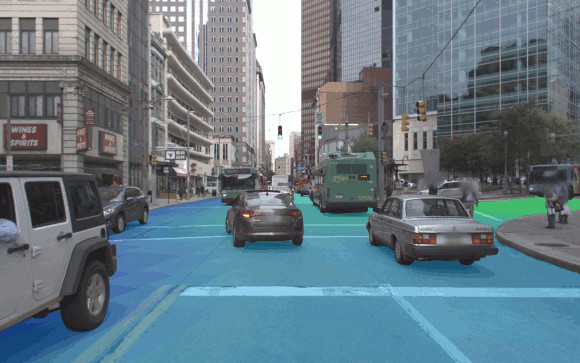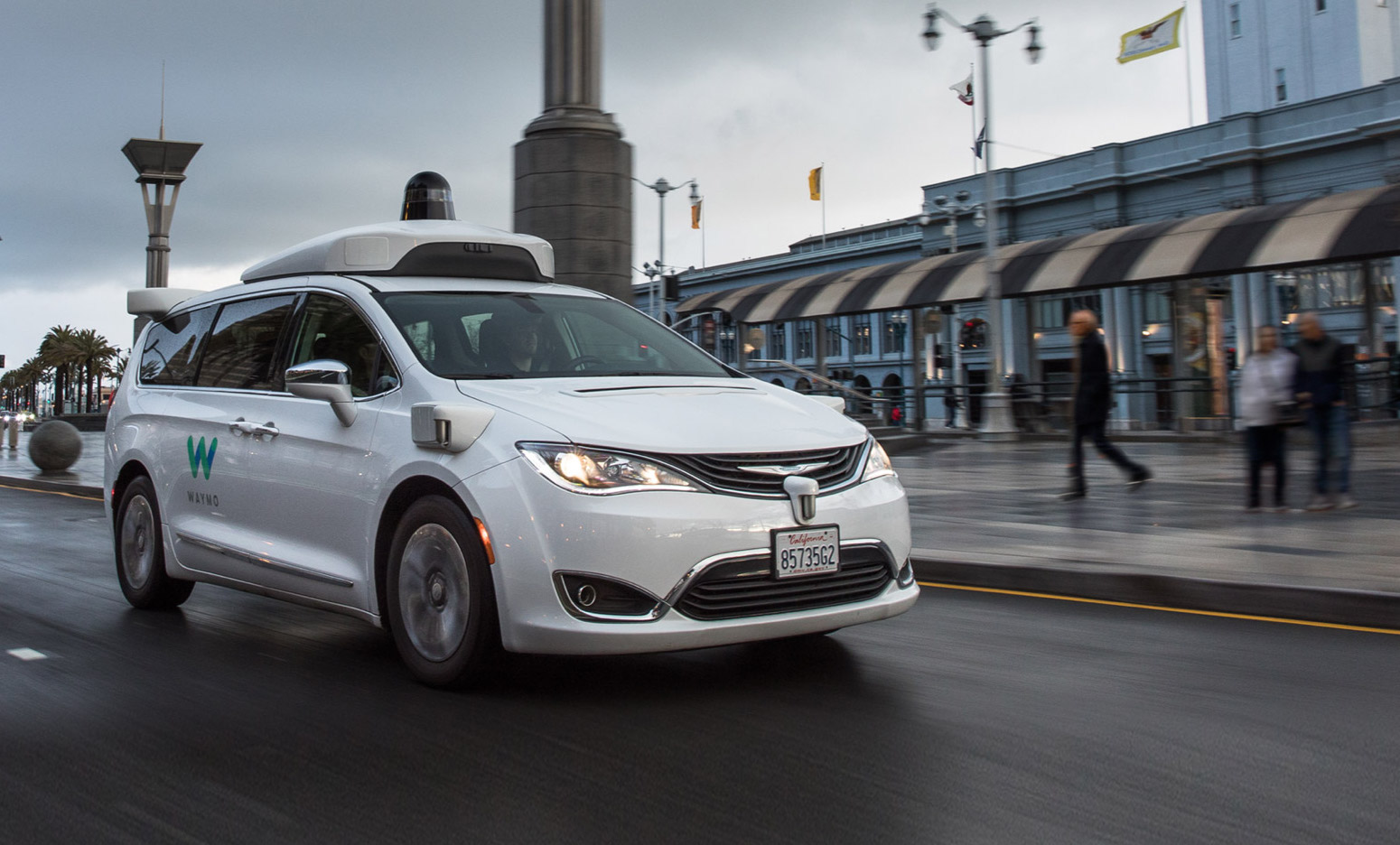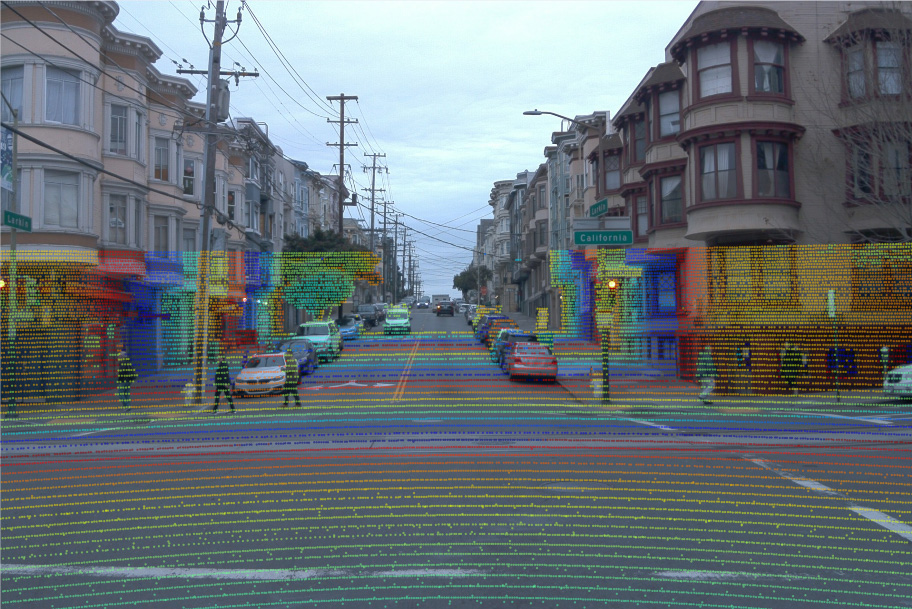- YouTube playlist with all talks is onlineLive stream is onlineYou can follow the workshop using the CVPR Zoom or using our live stream on YouTube (https://www.youtube.com/c/WADatCVPR )Schedual onlineArgoverse and Waymo Open Dataset Challenges are runningThe workshop date is fixed: 20th of June 2021About The Workshop
The CVPR 2021 Workshop on Autonomous Driving (WAD) aims to gather researchers and engineers from academia and industry to discuss the latest advances in perception for autonomous driving. In this one-day workshop, we will have regular paper presentations, invited speakers, and technical benchmark challenges to present the current state of the art, as well as the limitations and future directions for computer vision in autonomous driving, arguably the most promising application of computer vision and AI in general. The previous chapters of the workshop at CVPR attracted hundreds of researchers to attend. This year, multiple industry sponsors also join our organizing efforts to push its success to a new level.
Challenges
Speakers
+Participants

 Participate
Participate
Paper Submission
We solicit paper submissions on novel methods and application scenarios of CV for Autonomous vehicles. We accept papers on a variety of topics, including autonomous navigation and exploration, ADAS, UAV, deep learning, calibration, SLAM, etc.. Papers will be peer reviewed under double-blind policy and the extended submission deadline is March 26th 2021. Accepted papers will be presented at the poster session, some as orals and one paper will be awarded as the best paper.
Challenge Track
We host two challenges to understand the current status of computer vision algorithms in solving the environmental perception problems for autonomous driving. We have prepared a number of large scale datasets with fine annotation, collected and annotated by Waymo and Argo AI. Based on the datasets, we have define a multitude realistic problems and encourage new algorithms and pipelines to be invented for autonomous driving).
 Schedule
Schedule- 7:50 am
-
Opening Remarks
- 8:00 am
-
Alex Kendall - Wayve Recording of the Talk on YouTube
- 8:30 am
-
Deva Ramanan - CMU Recording of the Talk on YouTube
- 9:00 am
-
Waymo Open Dataset Challenge Recording of the Talk on YouTube
- 10:00 am
-
Caffee Break & Poster Session
- 10:30 am
-
Carl Wellington - Aurora Recording of the Talk on YouTube
- 11:00 am
-
Sarah Tariq - Nvidia Recording of the Talk on YouTube
- 11:30 am
-
Lunch Break & poster session
- 12:15 pm
-
Vladlen Koltun - Intel Recording of the Talk on YouTube
- 12:45 pm
-
Raquel Urtasun - UofT & Waabi Recording of the Talk on YouTube
- 1:15 pm
-
Argoverse Challenge Recording of the Talk on YouTube
- 2:15 pm
-
Bo Li - UIUC Recording of the Talk on YouTube
- 2:45 pm
-
Adrien Gaidon - TRI Recording of the Talk on YouTube
- 3:15 pm
-
Andrej Karpathy - Tesla Recording of the Talk on YouTube
- 3:45 pm
-
Closing Remarks & Gatherly
Call for PapersImportant Dates
- Workshop paper submission deadline:
March 22nd 2021March 26th 2021Notification to authors: 16th April 2021Camera ready deadline: 19th April 2021Topics Covered
Topics of the papers include but are not limited to:
- Autonomous navigation and explorationVision based advanced driving assistance systems, driver monitoring and advanced interfacesVision systems for unmanned aerial and underwater vehiclesDeep Learning, machine learning, and image analysis techniques in vehicle technologyPerformance evaluation of vehicular applicationsOn-board calibration of acquisition systems (e.g., cameras, radars, lidars)3D reconstruction and understandingVision based localization (e.g., place recognition, visual odometry, SLAM)
Presentation Guidelines
All accepted papers will be presented as posters. The guidelines for the posters are the same as at the main conference.Submission Guidelines
- We solicit short papers on autonomous vehicle topicsSubmitted manuscript should follow the CVPR 2021 paper templateThe page limit is 8 pages (excluding references)We accept dual submissions, but the manuscript must contain substantial original contents not submitted to any other conference, workshop or journalSubmissions will be rejected without review if they:
- contain more than 8 pages (excluding references)violate the double-blind policy or violate the dual-submission policyThe accepted papers will be linked at the workshop webpage and also in the main conference proceedings if the authors agreePapers will be peer reviewed under double-blind policy, and must be submitted online through the CMT submission system at: https://cmt3.research.microsoft.com/WAD2021
Accepted PapersRethinking of Radar's Role: A Camera-Radar Dataset and Systematic Annotator via Coordinate Alignment
Authors: Yizhou Wang, Gaoang Wang, Hung-Min Hsu, Hui Liu, Jenq-Neng Hwang
The paper can be found here: openaccess@thecvfVideo Class Agnostic Segmentation Benchmark for Autonomous Driving
Authors: Mennatullah Siam, Alex Kendall, Martin Jagersand
The paper can be found here: openaccess@thecvfLearning Depth-Guided Convolutions for Monocular 3D Object Detection
Authors: Mingyu Ding, Yuqi Huo, Hongwei Yi, Zhe Wang, Jianping Shi, Zhiwu Lu and Ping Luo
The paper can be found here: openaccess@thecvfLCCNet: LiDAR and Camera Self-Calibration Using Cost Volume Network
Authors: Xudong Lv, Boya Wang, Ziwen Dou, Dong Ye, Shuo Wang
The paper can be found here: openaccess@thecvfSoft Cross Entropy Loss and Bottleneck Tri-Cost Volume for Efficient Stereo Depth Prediction
Authors: Tyler Nuanes, Matt Elsey, Aswin Sankaranarayanan, John Shen
The paper can be found here: openaccess@thecvfLatent Space Regularization for Unsupervised Domain Adaptation in Semantic Segmentation
Authors: SFrancesco Barbato, Marco Toldo, Umberto Michieli, Pietro Zanuttigh
The paper can be found here: openaccess@thecvfAccurate 3D Object Detection Using Energy-Based Models
Authors: Fredrik K. Gustafsson, Martin Danelljan, Thomas B. Schon
The paper can be found here: openaccess@thecvfRAD: Realtime and Accurate 3D Object Detection on Embedded Systems
Authors: Hamed H. Aghdam, Elnaz J. Heravi, Selameab S. Demilew, Robert Laganiere
The paper can be found here: openaccess@thecvfMulti-Task Learning With Attention for End-to-End Autonomous Driving
Authors: Keishi Ishihara, Anssi Kanervisto, Jun Miura, Ville Hautamaki
The paper can be found here: openaccess@thecvfOcclusion Guided Scene Flow Estimation on 3D Point Clouds
Authors: Bojun Ouyang, Dan Raviv
The paper can be found here: openaccess@thecvfSemi-Synthesis: A Fast Way To Produce Effective Datasets for Stereo Matching
Authors: Ju He, Enyu Zhou, Liusheng Sun, Fei Lei, Chenyang Liu, Wenxiu Sun
The paper can be found here: openaccess@thecvfMVFuseNet: Improving End-to-End Object Detection and Motion Forecasting Through Multi-View Fusion of LiDAR Data
Authors: Ankit Laddha, Shivam Gautam, Stefan Palombo, Shreyash Pandey, Carlos Vallespi-Gonzalez
The paper can be found here: openaccess@thecvfWaymo Open Dataset Challenge ReportsMotion Prediction Challenge
1st Place: Tsinghua MARS - DenseTNT - Junru Gu, Qiao Sun, Hang Zhao - Tsinghua University (Report)
2nd Place: ReCoAt - Xiaoyu Mo, Zhiyu Huang, Chen Lyu - Nanyang Technological University (Report)
3rd Place: SimpleCNNOnRaster - Stepan Konev, Artsiom Sanakoyeu, Kirill Brodt - Skolkovo Institute of Science and Technology, Heidelberg University, Novosibirsk State University
Interaction Prediction Challenge
1st Place: HeatIRm4 - Xiaoyu Mo, Zhiyu Huang, Chen Lyu - Nanyang Technological University (Report)
Honorable mention: AIR2 for Interaction Prediction - David Wu, Yunnan Wu (Report)
Real-time 3D Challenge
1st Place: AFDetV2 - Yihan Hu, Zhuangzhuang Ding, Runzhou Ge, Wenxin Shao, Li Huang, Kun Li, Qiang Liu - Horizon Robotics (Report)
2nd Place: CenterPoint++ - Tianwei Yin, Xingyi Zhou, Philipp Krähenbühl - University of Texas, Austin (Report)
3rd Place: X_Autonomous3D - Lu Tian, Jinzhang Peng, Rongzhang Zheng, Han Liu - Xilinx (Report)
Most efficient model: AFDetV2_Base - Yihan Hu, Zhuangzhuang Ding, Runzhou Ge, Wenxin Shao, Li Huang, Kun Li, Qiang Liu - Horizon Robotics
Honorable mention: Real-time 3D Object Detection using Feature Map Flow - Youshaa Murhij, Dmitry Yudin - Moscow Institute of Physics and Technology (Report)
Real-time 2D Challenge
1st Place: LeapMotor_Det - Fenfen Wang, Qiankun Xie, Lindong Li, Yaonong Wang, Hongtao Zhou, Han Xu, Yu Wang, Xiubo Ye - Leapmotor Technology (Report)
2nd Place: DIDI MapVision - Yueming Zhang, Xiaolin Song, Bing Bai, Tengfei Xing, Chao Liu, Xin Gao, Zhihui Wang, Yawei Wen, Haojin Liao, Guoshan Zhang, Pengfei Xu - Tianjin University, DIDI (Report)
3rd Place: dereyly_self_ensemble - Nikolay Sergievskiy - XIX.ai (Report)
Honorable mention: Manuel Carranza Garcia, Pedro Lara-Benitez - University of Seville (Report)
Honorable mention: Object Detection with Camera-wise Training - Hyung-Joon Jeon, Duong Nguyen-Ngoc Tran, Long Hoang Pham, Huy-Hung Nguyen, Tai Huu-Phuong Tran, Jae Wook Jeon - Sungkyunkwan University (Report)
ChallengesWe host challenges to understand the current status of computer vision algorithms in solving the environmental perception problems for autonomous driving. We have prepared a number of large scale datasets with fine annotation, collected and annotated by Argo AI and Waymo. Based on the datasets, we have defined a set of several realistic problems and encourage new algorithms and pipelines to be invented for autonomous driving.

Challenge 1: Waymo Open Dataset Challenges
The 2021 Waymo Open Dataset Challenges are live! We are inviting eligible researchers to participate in four challenges involving both the new motion dataset, and existing perception dataset, in our Waymo Open Dataset.
- Motion prediction challenge: Given agents' tracks for the past 1 second on a corresponding map, predict the positions of up to 8 agents for 8 seconds into the future.Interaction prediction challenge: Given agents' tracks for the past 1 second on a corresponding map, predict the joint future positions of 2 interacting agents for 8 seconds into the future.Real-time 3D detection: Given three lidar range images and the associated camera images, produce a set of 3D upright boxes for the objects in the scene.Real-time 2D detection: Given a set of camera images, produce a set of 2D boxes for the objects in the scene, with a latency requirement.
The winning team for each challenge will receive a $15,000 cash award, with second-place teams receiving $5,000 and third place $2,000.
You can find the rules for participating in the challenges here. The challenges close at 11:59pm Pacific on May 31, 2021, but the leaderboards will remain open for future submissions.Challenge 2: Argoverse Challenges
Our second set of challenges use the Argoverse dataset. Argo AI is offering $8,000 in prizes for Stereo and Motion Forecasting and competitions and there are an additional $2,700 in prizes for the streaming detection challenge.
- Stereo depth estimation challenge: Given a pair of rectified, high resolution (2056 x 2464 pixels) stereo images, predict dense depth. "Ground truth" depth is created by lidar accumulation with non-rigid scene flow.Motion forecasting challenge: Given an agent's track for the past two seconds, along with a map and the trajectories of other objects, predict the agent's trajectory three seconds into the future.Streaming 2D detection: Given a stream of camera images, produce real time detections that are benchmarked with streaming accuracy, a unified full-stack metric combining classic accuracy (average precision) and latency.
The competition will end on June 13th. Winning methods will be highlighted during the workshop.

Datasets
Waymo Open Dataset
The Waymo Open Dataset is comprised of high resolution sensor data collected by autonomous vehicles operated by the Waymo Driver in a wide variety of conditions. We are releasing this dataset publicly to aid the research community in making advancements in machine perception and autonomous driving technology.
Argoverse by Argo AI
Argoverse is the first large-scale self-driving data collection to include HD maps with geometric and semantic metadata — such as lane centerlines, lane direction, and driveable area. All of the detail we provide makes it possible to develop more accurate perception algorithms, which in turn will enable self-driving vehicles to safely navigate complex city streets.
 Organizers
OrganizersGeneral Chairs
Program Chairs
























